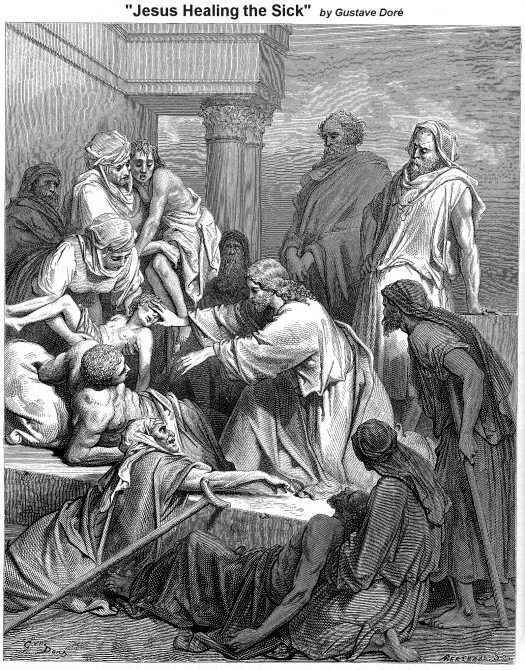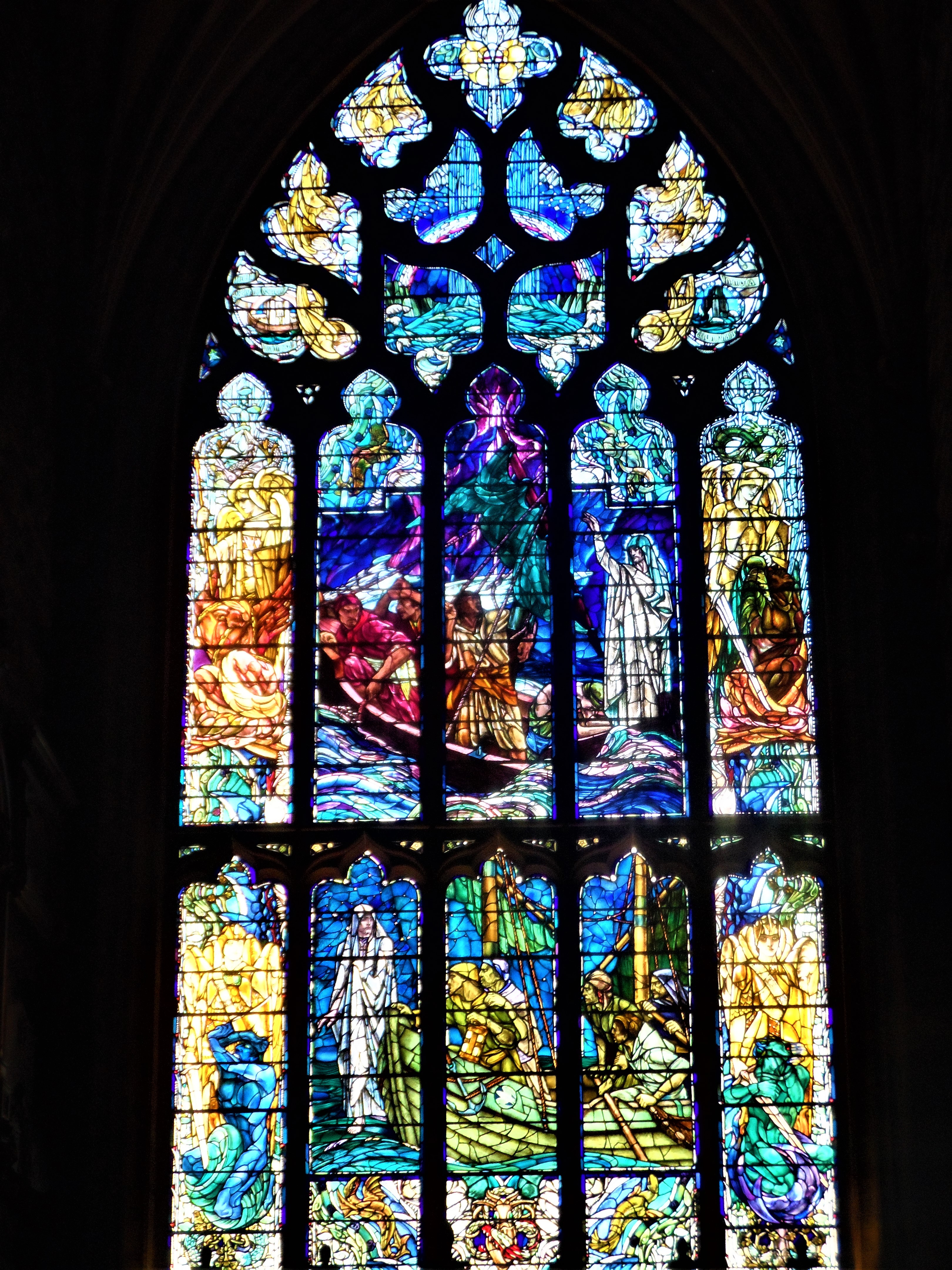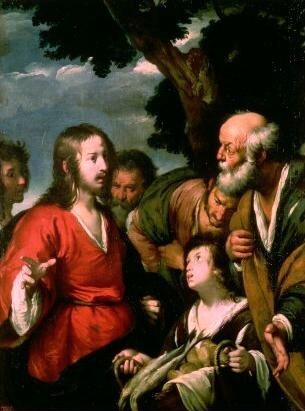|
Matthew 14
Matthew 14 is the fourteenth chapter in the Gospel of Matthew in the New Testament section of the Christian Bible. It continues the narrative about Jesus' ministry in Galilee and recounts the circumstances leading to the death of John the Baptist. Text The original text was written in Koine Greek. This chapter is divided into 36 verses. Textual witnesses Some early manuscripts containing the text of this chapter are: *Papyrus 103 (~200; extant verses 3–5) * Codex Vaticanus (325-350) * Codex Sinaiticus (330-360) * Codex Bezae (~400) * Codex Washingtonianus (~400) *Codex Ephraemi Rescriptus (~450) *Codex Purpureus Rossanensis (6th century) *Codex Petropolitanus Purpureus (6th century; extant verses 1–5, 23–36) *Codex Sinopensis (6th century; extant verses 1–4, 13–20) Structure This chapter can be grouped (with cross references to parallel passages in the other gospels): * = Death of John the Baptist (}; ) * = Feeding the 5000 (}; ; ) * = Jesus' walk on wate ... [...More Info...] [...Related Items...] OR: [Wikipedia] [Google] [Baidu] |
Gospel Of Matthew
The Gospel of Matthew), or simply Matthew. It is most commonly abbreviated as "Matt." is the first book of the New Testament of the Bible and one of the three synoptic Gospels. It tells how Israel's Messiah, Jesus, comes to his people and forms a community of disciples, of how he taught the people through such events as the Sermon on the Mount and its Beatitudes, and how Israel becomes divided and how Jesus condemns this hostile Israel. This culminates in his departure from the Temple and his execution. At this point many people reject Jesus, and on his resurrection he sends the disciples to the gentiles. Matthew seems to emphasize that the Jewish tradition should not be lost in a church that was increasingly becoming gentile. The gospel reflects the struggles and conflicts between the evangelist's community and the other Jews, particularly with its sharp criticism of the scribes and Pharisees with the position that through their rejection of Christ, the Kingdom of God ... [...More Info...] [...Related Items...] OR: [Wikipedia] [Google] [Baidu] |
Codex Petropolitanus Purpureus
Codex Petropolitanus Purpureus, designated by N or 022 (in the Gregory-Aland numbering), ε 19 ( Soden), is a Greek New Testament codex containing the four Gospels. It has been paleographically dated to the 6th century. Codex Petropolitanus Purpureus, along with the manuscripts Φ, O, and Σ, belongs to the group of the Purple Uncials. The manuscript is very lacunose. Description The codex is made of 231 parchment leaves (32 x 27 cm), with the text written in two columns, 16 lines per page, 12 letters in line, in large uncial letters. The lettering is in silver ink on vellum dyed purple, with gold ink used for the nomina sacra (, , , , and ). It has errors of iotacisms, as the change of ι and ει, αι and ε. It has been calculated the original codex contained 462 leaves. The tables of κεφάλαια (''tables of contents'') were placed before each Gospel. The text is divided according to the κεφάλαια (''chapters''), whose numbers are given at the mar ... [...More Info...] [...Related Items...] OR: [Wikipedia] [Google] [Baidu] |
Ahab
Ahab (; akk, 𒀀𒄩𒀊𒁍 ''Aḫâbbu'' 'a-ḫa-ab-bu'' grc-koi, Ἀχαάβ ''Achaáb''; la, Achab) was the seventh king of Israel, the son and successor of King Omri and the husband of Jezebel of Sidon, according to the Hebrew Bible. The Hebrew Bible presents Ahab as a wicked king, particularly for condoning Jezebel's influence on religious policies and his principal role behind Naboth's arbitrary execution. The existence of Ahab is historically supported outside the Bible. Shalmaneser III of Assyria documented in 853 BC that he defeated an alliance of a dozen kings in the Battle of Qarqar; one of these was Ahab. He is also mentioned on the inscriptions of the Mesha Stele. Ahab became king of Israel in the thirty-eighth year of King Asa of Judah, and reigned for twenty-two years, according to 1 Kings. William F. Albright dated his reign to 869–850 BC, while Edwin R. Thiele offered the dates 874–853 BC. Most recently, Michael Coogan has dated Ahab's reign to 871 ... [...More Info...] [...Related Items...] OR: [Wikipedia] [Google] [Baidu] |
Elijah
Elijah ( ; he, אֵלִיָּהוּ, ʾĒlīyyāhū, meaning "My God is Yahweh/ YHWH"; Greek form: Elias, ''Elías''; syr, ܐܸܠܝܼܵܐ, ''Elyāe''; Arabic: إلياس or إليا, ''Ilyās'' or ''Ilyā''. ) was, according to the Books of Kings in the Hebrew Bible, a prophet and a miracle worker who lived in the northern kingdom of Israel during the reign of King Ahab (9th century BCE). In 1 Kings 18, Elijah defended the worship of the Hebrew God over that of the Canaanite deity Baal. God also performed many miracles through Elijah, including resurrection, bringing fire down from the sky, and entering heaven alive "by fire". 2 Kings 2:11 He is also portrayed as leading a school of prophets known as "the sons of the prophets". Following his ascension, Elisha, his disciple and most devoted assistant, took over his role as leader of this school. The Book of Malachi prophesies Elijah's return "before the coming of the great and terrible day of the ", making him a harbin ... [...More Info...] [...Related Items...] OR: [Wikipedia] [Google] [Baidu] |
Pontius Pilate
Pontius Pilate (; grc-gre, Πόντιος Πιλᾶτος, ) was the fifth governor of the Roman province of Judaea, serving under Emperor Tiberius from 26/27 to 36/37 AD. He is best known for being the official who presided over the trial of Jesus and ultimately ordered his crucifixion. Pilate's importance in modern Christianity is underscored by his prominent place in both the Apostles' and Nicene Creeds. Due to the Gospels' portrayal of Pilate as reluctant to execute Jesus, the Ethiopian Church believes that Pilate became a Christian and venerates him as both a martyr and a saint, a belief which is historically shared by the Coptic Church. Although Pilate is the best-attested governor of Judaea, few sources regarding his rule have survived. Nothing is known about his life before he became governor of Judaea, and nothing is known about the circumstances that led to his appointment to the governorship. Coins that he minted have survived from Pilate's governorship, as we ... [...More Info...] [...Related Items...] OR: [Wikipedia] [Google] [Baidu] |
Passion Of Jesus
In Christianity, the Passion (from the Latin verb ''patior, passus sum''; "to suffer, bear, endure", from which also "patience, patient", etc.) is the short final period in the life of Jesus Christ. Depending on one's views, the "Passion" may include, among other events, Jesus' triumphal entry into Jerusalem, his cleansing of the Temple, his anointing, the Last Supper, Jesus' agony in the Garden, his arrest, his Sanhedrin trial, his trial before Pontius Pilate, his crucifixion and his death on Good Friday, his burial, and the resurrection of Jesus. Those parts of the four canonical Gospels that describe these events are known as the "Passion narratives". In some Christian communities, commemoration of the Passion also includes remembrance of the sorrow of Mary, the mother of Jesus, on the Friday of Sorrows. The word ''passion'' has taken on a more general application and now may also apply to accounts of the suffering and death of Christian martyrs, sometimes using the L ... [...More Info...] [...Related Items...] OR: [Wikipedia] [Google] [Baidu] |
Dale Allison
Dale C. Allison (born November 25, 1955) is an American New Testament scholar, historian of Early Christianity, and Christian theologian who for years served as Errett M. Grable Professor of New Testament Exegesis and Early Christianity at Pittsburgh Theological Seminary. He is currently the Richard J. Dearborn Professor of New Testament Studies at Princeton Theological Seminary. He is an ordained elder in the Presbyterian Church (USA). Career Allison received a BA from Wichita State University (1977) and an MA (1979) and a PhD (1982) from Duke University. His works as an author include the books ''Constructing Jesus: Memory, Imagination, and History'', about the gospels, and ''The Love There That's Sleeping'', focusing on the religious songwriting of George Harrison George Harrison (25 February 1943 – 29 November 2001) was an English musician and singer-songwriter who achieved international fame as the lead guitarist of the Beatles. Sometimes called "the qu ... [...More Info...] [...Related Items...] OR: [Wikipedia] [Google] [Baidu] |
Herod The Great
Herod I (; ; grc-gre, ; c. 72 – 4 or 1 BCE), also known as Herod the Great, was a History of the Jews in the Roman Empire, Roman Jewish client state, client king of Judea, referred to as the Herodian Kingdom of Judea, Herodian kingdom. He is known for his colossal building projects throughout Judea, including his renovation of the Second Temple#Herod's Temple, Second Temple in Jerusalem and the expansion of the Temple Mount towards its north, the enclosure around the Cave of the Patriarchs in Hebron, the construction of the port at Caesarea Maritima, the fortress at Masada, and Herodium. Vital details of his life are recorded in the works of the 1st century CE Roman–Jewish historian Josephus. Herod also appears in the Christian Gospel of Matthew as the ruler of Judea who orders the Massacre of the Innocents at the time of the Nativity of Jesus, birth of Jesus, although most Herod biographers do not believe that this event occurred. Despite his successes, including singleh ... [...More Info...] [...Related Items...] OR: [Wikipedia] [Google] [Baidu] |
Herod Antipas
Herod Antipas ( el, Ἡρῴδης Ἀντίπας, ''Hērǭdēs Antipas''; born before 20 BC – died after 39 AD), was a 1st-century ruler of Galilee and Perea, who bore the title of tetrarch ("ruler of a quarter") and is referred to as both "Herod the Tetrarch" and "King Herod" in the New Testament, although he never held the title of king. He was a son of Herod the Great and a grandson of Antipater the Idumaean. He is widely known today for accounts in the New Testament of his role in events that led to the executions of John the Baptist and Jesus of Nazareth (). Following the death of his father in 4 BC, Herod Antipas was recognized as tetrarch by Caesar Augustus, and subsequently by his own brother, the ethnarch Herod Archelaus. Antipas officially ruled Galilee and Perea as a client state of the Roman Empire.Marshall, Taylor, 2012. ''The Eternal City'', Dallas: St. John, pp. 35–65.Steinmann, Andrew, 2011. ''From Abraham to Paul: A Biblical Chronology'', St. Louis: Co ... [...More Info...] [...Related Items...] OR: [Wikipedia] [Google] [Baidu] |
Jesus Healing In The Land Of Gennesaret
According to the Gospel of Mark, as Jesus passes through Gennesaret, just after the account of him walking on water, all those who touch the edge, or Hem, or fringe of his cloak are healed: The same account is given in Matthew 14:34-36. In both the gospels, those who were sick aimed to touch the tassels (Greek: gr, κράσπεδον, ''kraspedon'') of Jesus' garments, "which in accordance with , the Jew wore on each of the four extremities of his cloak". First-century historian Flavius Josephus refers to the Gennesaret area as having very rich soil. The town was perhaps halfway between Capernaum and Magdala. This account is seen by some as a vindication of the reverence paid to relics practiced in the Catholic and Orthodox churches. As John McEvilly notes, this is because Jesus, "far from condemning, as superstitious, the respect and reverence paid to the clothes which He wore, even directly sanctions it, by working miracles in approval of it." See also * Life of Jesus ... [...More Info...] [...Related Items...] OR: [Wikipedia] [Google] [Baidu] |
Jesus' Walk On Water
Jesus walking on the water, or on the sea, is depicted as one of the miracles of Jesus recounted in the New Testament. There are accounts of this event in three Gospels—Matthew, Mark, and John—but it is not included in the Gospel of Luke. This story, following the miracle of the feeding of the five thousand, tells how Jesus sent the disciples by ship back to the "other side" of the Sea of Galilee (the western side) while he remained behind, alone, to pray. Night fell and the sea arose as the ship became caught in a wind storm. After rowing against the wind for most of the night, the disciples saw Jesus walking on the water. They were frightened, thinking that they were seeing a spirit, but when Jesus told them not to be afraid, they were reassured. After Jesus entered the ship, the wind ceased, and they arrived at land. Biblical narratives The story of Jesus walking on water is retold in the gospels of Matthew, Mark, and John; it is not in the Gospel of Luke. This episode is ... [...More Info...] [...Related Items...] OR: [Wikipedia] [Google] [Baidu] |
Feeding The Multitude
In Christianity Christianity is an Abrahamic monotheistic religion based on the life and teachings of Jesus of Nazareth Jesus, likely from he, יֵשׁוּעַ, translit=Yēšūaʿ, label=Hebrew/Aramaic ( AD 30 or 33), also referred to as Jesu ..., the feeding the multitude is two separate miracles of Jesus reported in the Gospels. The first miracle, the "Feeding of the 5,000", is the only miracle—aside from the resurrection—recorded in all four gospels ( Matthew 14:13–21; Mark 6:31–44; Luke 9:12–17; John 6:1–14). The second miracle, the "Feeding of the 4,000", with 7 loaves of bread and a few small fish, is reported by Matthew 15:32–39 and Mark 8:1–9, but not by Luke or John. The feeding of the 5,000 people The Feeding of the 5,000 is also known as the "miracle of the five loaves and two fish"; the Gospel of John reports that Jesus used five loaves and two fish supplied by a boy to feed a multitude. According to Matthew's gospel, when Jes ... [...More Info...] [...Related Items...] OR: [Wikipedia] [Google] [Baidu] |

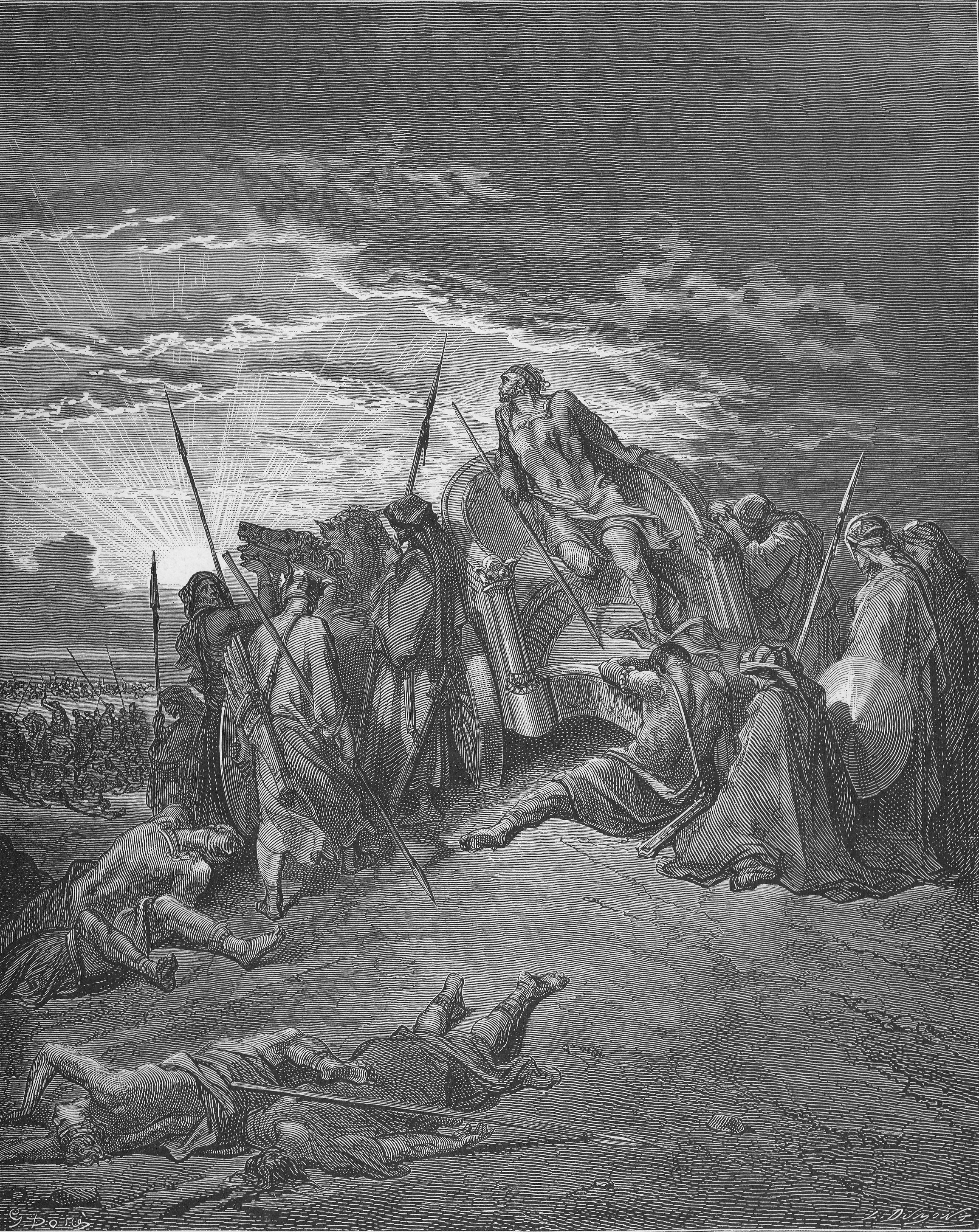

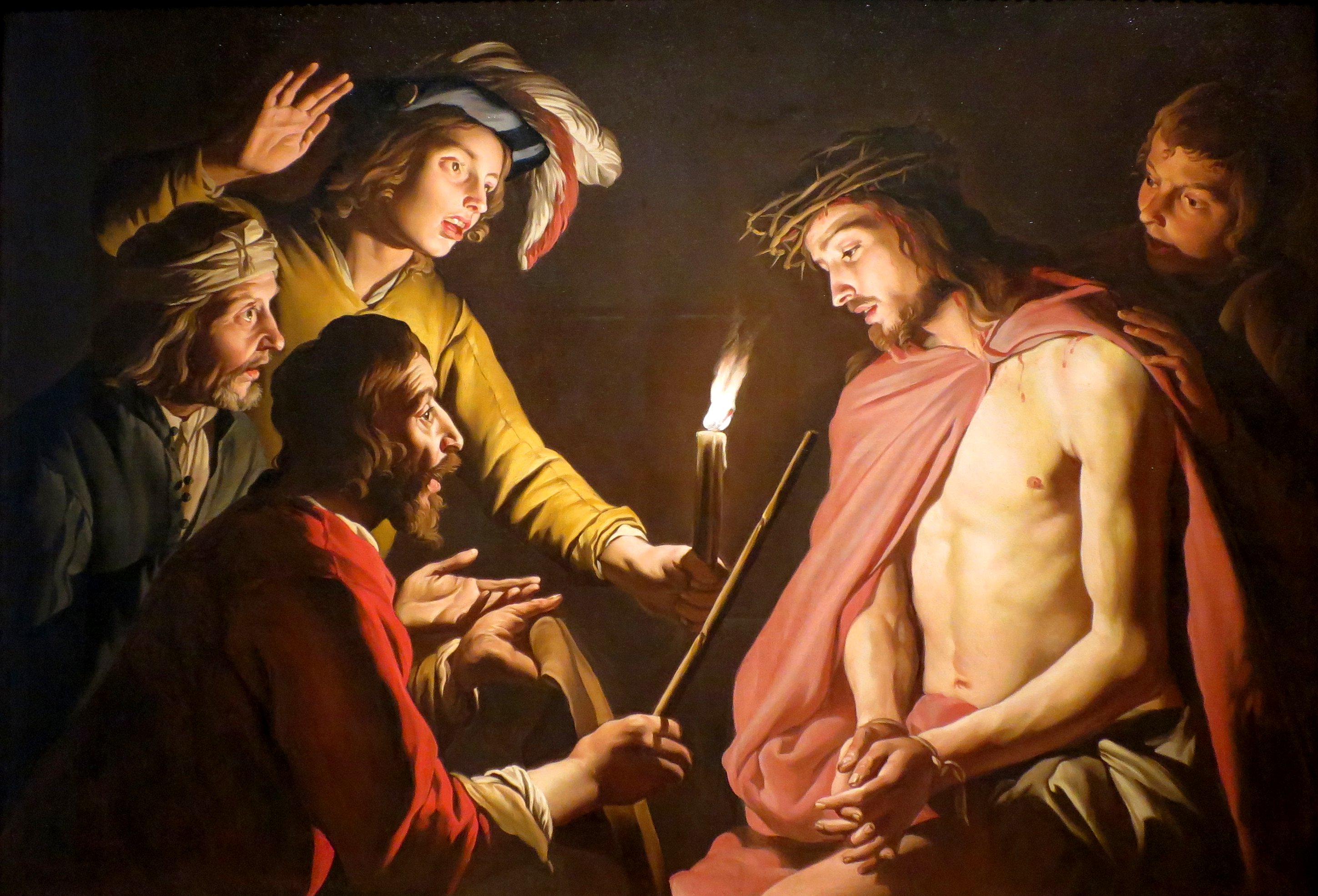
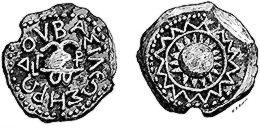
_-_James_Tissot_-_overall.jpg)
